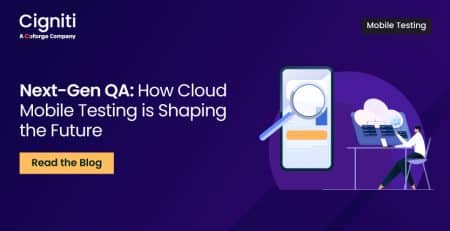7 Key Characteristics of Testing Bank Applications
Bank applications are quickly turning out to be not just handy, but necessary, as customers grow better educated about their financial options. Inhibitions are fading as more end-users familiarize themselves with the digital functionality of bank applications, whether in the form of Net Banking, or through Mobile Application Banking. While bank applications are constantly impacting customer lifestyle, if not done with precision, they could lead to a laundry list of issues, the most severe of which remains a security threat. Rigorous testing of the app in multiple stages remains vital, for quality assurance through timely bug-fixing. In order to ensure that the application is efficient and helps users navigate it conveniently, the following characteristics need to be kept in mind while testing these bank applications.
-
Security Testing
The importance of security testing for apps today cannot be ignored. Having sensitive financial details displayed out in the open for everyone to see, or operating of a bank account in a mode that is attack-prone is anybody’s worst nightmare. Apart from reputation loss and loss of customer base, the bank can also face severe monetary losses in the event of a security breach. Compliance of the application with regulatory authorities also needs to be incorporated in the application testing process, as part of the legal procedure. This ensures that an unrecognized or unauthorized third-party application is not able to hack into the application for data theft.
-
Domain Expertise
Finance has stood the test of time, and after every downfall, has emerged as an ever more behemoth of an industry. As finance has rapidly taken to digital technology, practices and processes have become further streamlined and innovative. To be able to work in this domain, whether as an application developer or tester, demands a certain level of domain expertise. In order to thoroughly test user requirements, one needs to be adept at understanding financial terminology by incorporating test cases that are in line with bank procedures. A comprehensive bank application ideally should contain all the features desired by an active account holder, from basic Account Summary viewing to the monitoring of Stock Trading.
-
Functional Testing
Testing the functionality of the application by thoroughly understanding its internal workings is essential in most applications, with an added emphasis for bank applications. This is a core part of the testing process, where test cases are prepared, reviewed, and executed. The test cases are typically prepared from business scenarios, which result in further positive or negative test case scenarios. These test cases are then reviewed by Quality Assurance Engineers and are then executed, either manually or through automated testing, using automation tools. System integration testing, regression testing, and user acceptance testing, all together enable a comprehensive functional testing of the bank application.
-
Large-scale Integration
Usually, a bank application is integrated with other third-party payment applications. Movie bookings, restaurant orders, and online shopping, are the e-commerce applications that stand out the most. It is essential that the behaviour of the application while it is summoned by other payment gateways remains consistent and secure. Testing the software to ensure that the internal application is intact is necessary.
-
Mobile Device Diversity
Although seemingly basic, this remains a key aspect to testing. The most important point to note here is not just that there are multiple devices and their respective versions, but also that each application update would have to be incorporated slightly differently according to the device in use. Application functionality within mobile devices, and the corresponding operating systems (OS), need to be tested meticulously and repeatedly. Add to that the limitations of certain OS, delivering the updated application to the end-user seems like a fairly far-fetched dream. A comprehensive mobile testing lab is essential in order to immediately cater to application updates.
-
Performance Engineering
The convenience of using bank applications is encouraging more users to shift to regular usage of a mobile banking platform. This results in heavy load on the application, as many users are simultaneously downloading, installing, updating and using the application. Performance matters greatly, because these applications involve real-time financial tasks to be performed and if the app crashes, it could lead to duplicate charges.
-
Need for Collaborative Effort
This is perhaps the characteristic that easily matters the most and comes relatively early in the software lifecycle of the product. Developers, quality assurance engineers, operations specialist, and subject matter experts, need to all come together and work collaboratively in order to gain the complete understanding of the banking application and resolve issues early in the software life-cycle. Business requirements need to be carefully documented and worked upon, after the careful perusal of stakeholders.
In Conclusion
The testing carried out for bank applications needs to be comprehensive and requires quality assurance engineers with domain expertise. Here at Cigniti Technologies, our domain capabilities in the Banking sector span across multiple functionalities:
- Recent trends such as eWallets and Self Service Technologies
- Various delivery channels like Internet, Mobile, Mobile App, etc.
- Payments / Remittances including Cross Border and multi-currency transactions
- Fund Transfers through various modes such as NEFT, RTGS, IMPS and Bill Payments
To know more, visit our company website.





Leave a Reply